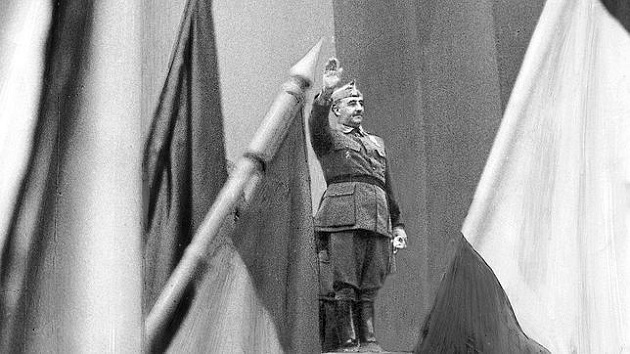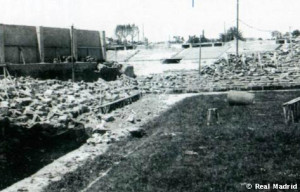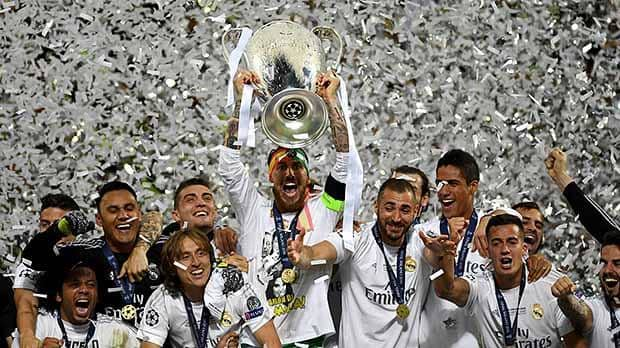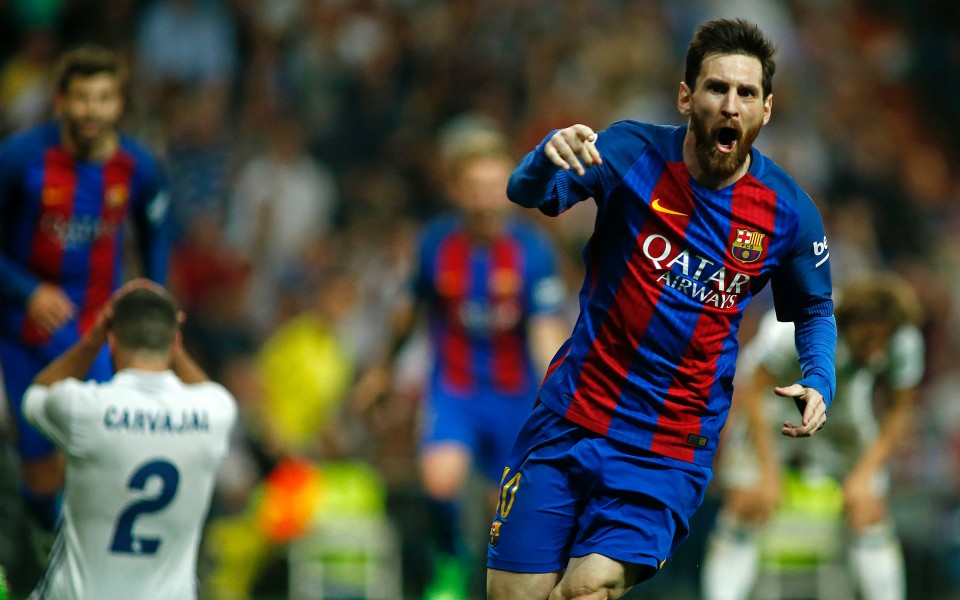Through over 100 years of history, Real Madrid has become one of the most recognizable names in world football. But how did they get there? In partnership with Howler magazine, The Center Circle is embarking on a multi-part journey from the roots of this historic club to the Cristiano Ronaldo era it enjoys today. If you consider yourself a Real fan, or really just a soccer fan in general, this is for you. Finally, do you see that “Hala Madrid” graphic right above this? You can click on that to open up Howler’s incredible Real Madrid timeline, replete with informative tidbits, pictures, and some cool graphics. Scroll through each section, zoom in to read, and enjoy.
Part III: A Nation and Club Divided
The Spanish Civil War reigned chaos, violence, and destruction on all of Spain. Yet, oddly, defiantly, miraculously, soccer survived and was still played. General Franco and the nationalist forces had taken hold of Andalucia and the country splintered into nationalist and republic sides. The military laid siege to major cities such as Barcelona and Madrid. Local militias comprised of anarchists, pro-democracy activists, socialist, and communists united to repel the Franco onslaught.
Madrid FC’s President, Ramon Sanchez Guerra, was pro-democracy. How far to the left was he? The club actually issued a quasi-apology to socios after his election, asking them to forget about politics and continue paying dues. Guerra used his clout with pro-democracy forces to prevent the Republicans from using the Chamartin stadium as a military base. However, even he couldn’t do anything once starvation, infighting, and despair took hold. The official images of the Chamartin post-Civil War show a shell of a stadium – Franco’s bombers probably did not hit the stadium, but the local rebels stripped every inch of wood for needed supplies.
Despite the siege, tournaments in Spain hummed along. Some, like the President’s Cup, were forced to accept amateur sides and thus Madrid FC declined to participate, With the local Madrid regional league suspended, Madrid FC and rivals Atletico de Madrid petitioned to play in the Mediterranean League, which featured teams from Catalonia and still “free Spain.” However, old bitter rivalries won out. FC Barcelona successfully lobbied to have both teams excluded.
Eventually, Franco’s forces won and the city of Madrid fell. Ramon Sanchez Guerra stayed until the end but soon left in exile rather than being shot. Franco’s brutal purges then resulted in the death of tens of thousands of Spaniards, individuals named “enemies of the state” and found guilty without a trial of “unlawful association.” His security apparatus confiscated the membership rolls of all major soccer clubs, including Madrid FC. He installed pro-regime puppets as Presidents at major clubs.
And thus came the silver lining for Madrid. During the Spanish Civil War, former player Santiago Bernabeu had staunchly supported Franco. In fact, a fellow member of Madrid FC had ratted Don Santiago out to the local militias, but Santiago had used a contact at the French Embassy to escape before a date with the firing squad. He had then returned and fought on behalf of Franco, including at the “liberation” of Barcelona. Guess who Franco was able to arrange to lead Madrid?
Don Santiago could have held grudges. However, upon returning to Madrid, he forgave the fellow employee and socio who had ratted him out. He also tracked down former players, socios, and employees. As a player, he had always punched above his weight: sudando la camiseta (sweating the shirt) even if his heart gave more than his feet. Now, in a the lead at Madrid and with connections to exploit, he knew it was time to lead Madrid up and out of the ashes.
Madrid restored the Chamartin in 1939, but found themselves again behind the pack. FC Barcelona had embarked on a lucrative tournament of the US and Mexico during the Civil War, stashing the cash in a French bank account. Even worse, local rival Atletico de Madrid had merged with Athletic Aviacion de Zaragoza – the new team, Athletic Aviacion, had been granted automatic promotion to the topflight and were coached by Ricardo Zamora, now a darling of the regime after having played in exhibition games to raise funds during the war.








No Comments